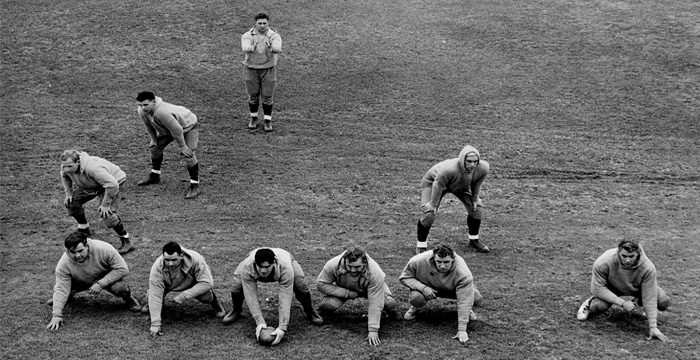University of Tennessee Takes It Slow in Archiving Historical Media Assets
In a 25-year effort, the Vols has digitized content from as long ago as 1928
Story Highlights
When tackling the daunting task of digitization and archival of historical media assets, it can be very tempting to try to slay the monster with one massive swing of the sword. Many who have gone through the process will tell you, though, that it’s less about checking a big item off a to-do list and more about developing a long-term strategy. It’s not a crash diet; it’s a lifestyle change.
At the University of Tennessee, protecting the athletic department’s historical archives is a process that has been going on for more than 25 years. That commitment has helped the Vols preserve — and make accessible — hundreds of hours of content dating all the way back to 1928.

The University of Tennessee Athletic Department has digitally archived hundreds of hours’ worth of historical content.
“Going slow is actually helpful,” says Barry Rice, assistant athletics director, broadcasting, University of Tennessee, who has gone through thousands and thousands of feet of film during his career. “The technology evolves so much that it’s a good thing financially and technologically to just take it slow and think of it as an evolutionary process. Don’t be afraid to go slow.”
He learned that the hard way, having converted files from unusable formats today, such as 16mm film, and moved through the eras of Beta, Digibeta, and now ProRes and QuickTime.
When he began his efforts in 1991, he thought he could take on the project in one fell swoop. That wasn’t to be.
“Thank goodness it didn’t work financially, because I would have transferred everything to a format that wouldn’t have lasted,” he jokes. “So I figured I could do a few thousand dollars every year, start with a priority list, and, after a number of years maybe, I’ll have it all done. That’s kind of where we are now.”
Rice has worked with many postproduction and transfer houses across the South in an effort to secure the UT archives and today is working with Atlanta-based Crawford Media Services, which offered him the full package in terms of archival and future asset-management workflows.
“Crawford had everything I needed,” he explains. “It truly was a one-stop show, and, in fact, I never thought to ask this, but I’d struggled finding ¾-in. decks and 1-in. decks to take care of things that I no longer have access to. I asked Crawford about those formats, and they said they could be our source for that, too. Now I have a place to go for all transfer.”
Although Rice is still building his dream asset-management system — the UT archive is now stored on a fleet of G-Technology 25-TB external hard drives — his digital archive now makes it much easier to meet requests when major networks, such as CBS and ESPN, come in to do a game and also helps support the efforts of the in-house video-production unit that is producing content for the SEC Network.
“It’s a valuable resource, and we should be tapping into that,” says Rice, reporting that the department has now safely archived every football game since 1938. “Our daily productions should reflect the great archive that we have.”
